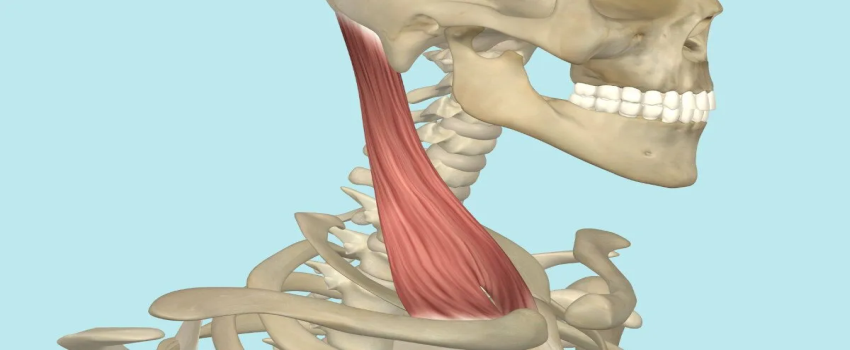How a Tight or Spasmed SCM Muscle Impacts Neck Health
Introduction
The human neck is a remarkable structure that connects the head to the rest of the body, supporting mobility and housing important blood vessels and nerves. Within this intricate system, the sternocleidomastoid (SCM) muscle plays a vital role. However, when the SCM muscle tightens or spasms, it can significantly impact neck health and overall well-being. In this blog post, we will explore the effects of a tight or spasmed sternocleidomastoid on the neck and discuss potential solutions to alleviate the discomfort.
Understanding the Sternocleidomastoid Muscle
The sternocleidomastoid is a large bilateral muscle located on each side of the neck, originating from the sternum and clavicle and inserted behind the ear. It plays a crucial role in tilting and rotating the head, allowing us to perform essential activities like turning our heads to view objects or changing directions while walking. However, due to various factors such as poor posture, stress, or muscle strain, the SCM muscle can become tight or go into spasm, causing significant discomfort.
Effects of a Tight or Spasmed Sternocleidomastoid Muscle
1. Neck Pain—A tight SCM muscle can result in persistent pain ranging from a dull ache to sharp stabbing sensations in the neck. This discomfort may spread to the back of the head, temples, and even the upper back or shoulders, limiting daily activities and overall quality of life.
2. Restricted Mobility—When the SCM muscle tightens, it can lead to a reduced range of motion in the neck, hindering normal head movement. Simple tasks like looking over your shoulder or turning your head while driving may become challenging and uncomfortable.
3. Headaches—The tension created by a tight or spasmed sternocleidomastoid muscle can give rise to tension headaches. These headaches typically manifest as a squeezing or pressure sensation around the temples, forehead, or base of the skull.
4. Postural Imbalances—A tight SCM muscle can contribute to postural imbalances, especially when it is coupled with weakened neck and upper back muscles. This imbalance can lead to a forward head posture, rounded shoulders, and an increased risk of developing other musculoskeletal issues over time.
Alleviating the Effects of a Tight or Spasmed Sternocleidomastoid Muscle
1. Stretching and Strengthening Exercises—Engaging in regular stretching and strengthening exercises can help prevent and relieve tight SCM muscles. Targeted exercises such as gentle neck stretches, neck side bends, and shoulder shrugs can enhance flexibility and strengthen supportive muscles.
2. Posture Awareness—Being conscious of maintaining proper posture throughout the day can significantly minimize SCM muscle tightness. Sit and stand with your shoulders back, and chin parallel to the ground, and avoid prolonged periods of tilting or rotating the head.
3. Stress Management—As stress is often a contributing factor to SCM muscle tension, adopting stress management techniques like deep breathing meditation or yoga can prove beneficial in reducing muscle spasms and relieving neck discomfort.
4. Professional Assistance—If the pain persists or worsens, seeking professional help, such as from a physical therapist, chiropractor, or skilled massage therapist, can be beneficial. They can provide specialized treatments such as manual therapy, electrical stimulation, or dry needling to help release tension in the sternocleidomastoid muscle.
Conclusion
A tight or spasmed sternocleidomastoid muscle can significantly impact neck health, causing pain, restricted mobility, headaches, and postural imbalances. By incorporating regular stretching and strengthening exercises, maintaining proper posture, managing stress levels, and seeking professional assistance when necessary, individuals can alleviate the effects of this muscle dysfunction and improve overall neck well-being. Remember it is essential to listen to your body and take proactive steps to maintain a healthy neck enabling you to lead a more comfortable and active life.

